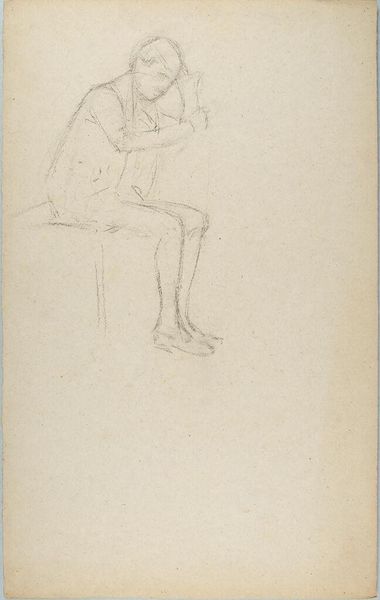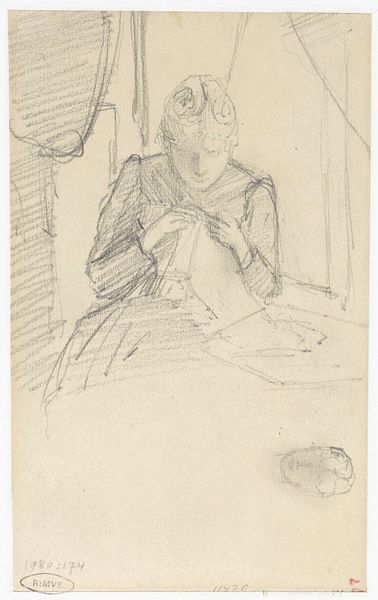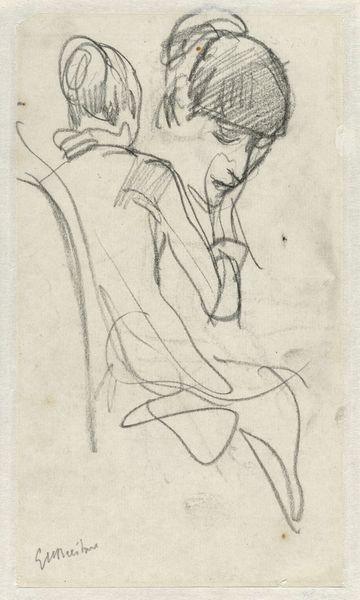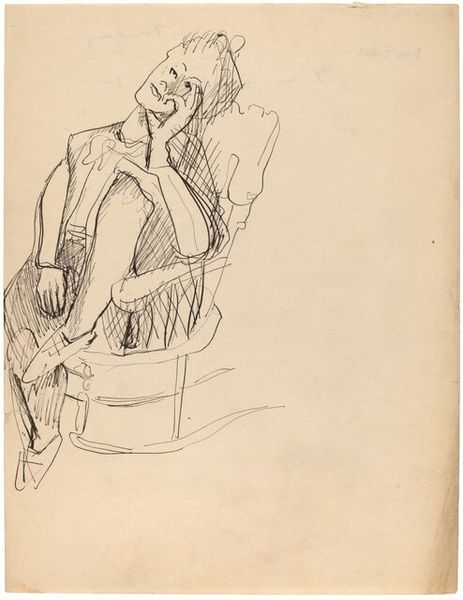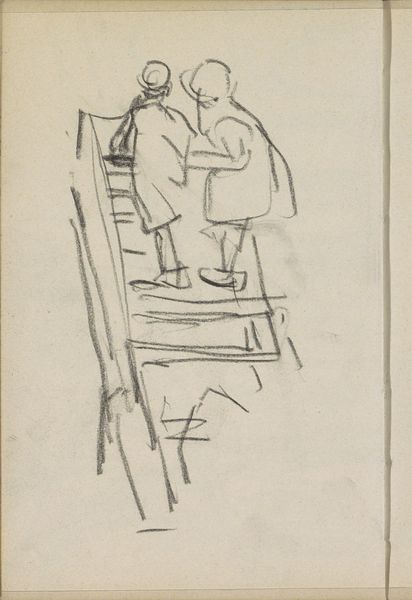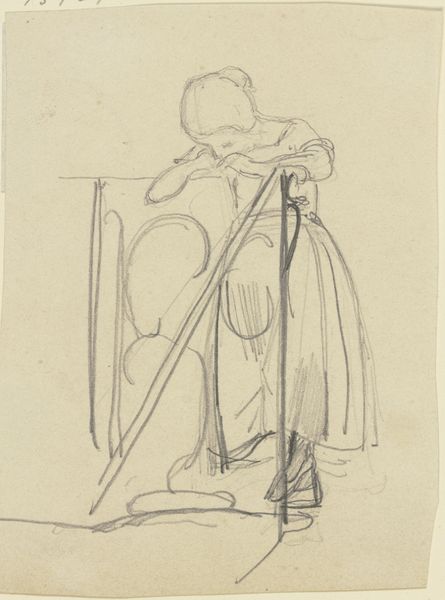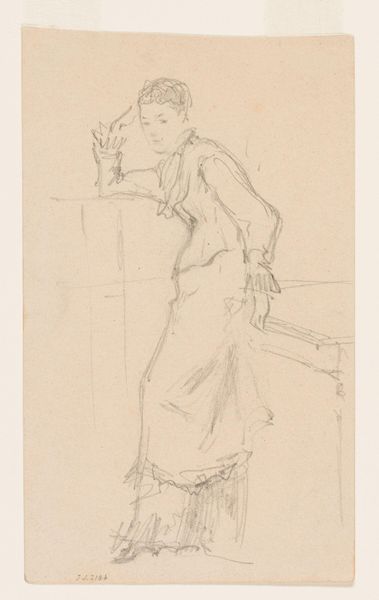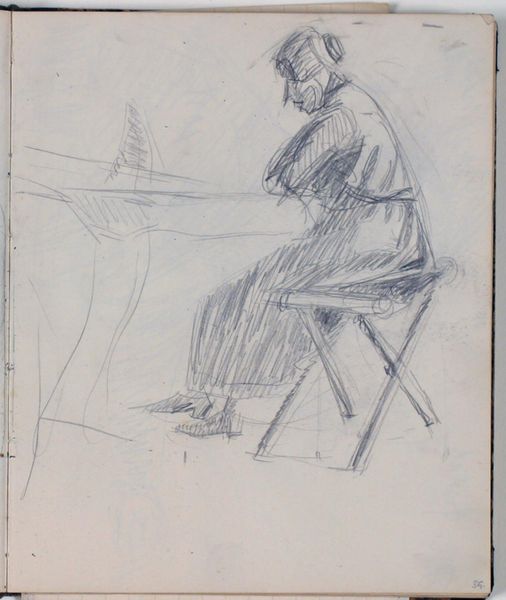
drawing, pencil
#
portrait
#
drawing
#
toned paper
#
light pencil work
#
quirky sketch
#
pencil sketch
#
personal sketchbook
#
ink drawing experimentation
#
pen-ink sketch
#
pencil
#
sketchbook drawing
#
genre-painting
#
sketchbook art
#
realism
#
initial sketch
Dimensions: height 235 mm, width 145 mm
Copyright: Rijks Museum: Open Domain
Editor: This drawing, "Aan tafel zittende vrouw," by Jozef Israëls, made sometime between 1834 and 1911, shows a woman seated at a table. It’s just a simple pencil sketch, but there's something so evocative about the scene; almost melancholic in its quiet intimacy. What do you see in this piece? Curator: It is more than it appears. Notice how the woman's back is turned. What could that suggest about her state of mind or her relationship to the viewer? Is she in quiet repose, at rest; or lonely? We could even ask, who is this figure and to what purpose did the artist record her? Editor: I hadn’t considered that her turned back creates distance, both physically and psychologically. So, is that a choice on the artist's part to make a comment on social standing, loneliness, or societal pressures? Curator: Precisely! Observe the very deliberate choices made by the artist that contribute to our understanding. The presence of the bucket could refer to manual tasks, her position behind a table creates psychological separation; perhaps reflecting broader themes of labor and societal expectations prevalent in the late 19th century. Do the shapes in the hair piece suggest social status and, or the lack of it? Editor: That’s fascinating, I hadn’t considered the items around her. I just thought it was a simple scene, but now I see all these other potential layers of meaning. It really underscores the importance of looking beyond the surface! Curator: Indeed. What may seem at first a simple, quiet moment reveals deeper cultural and psychological narratives when we begin to consider its symbols. This drawing reminds us that even the most unassuming images can speak volumes about their time.
Comments
No comments
Be the first to comment and join the conversation on the ultimate creative platform.
